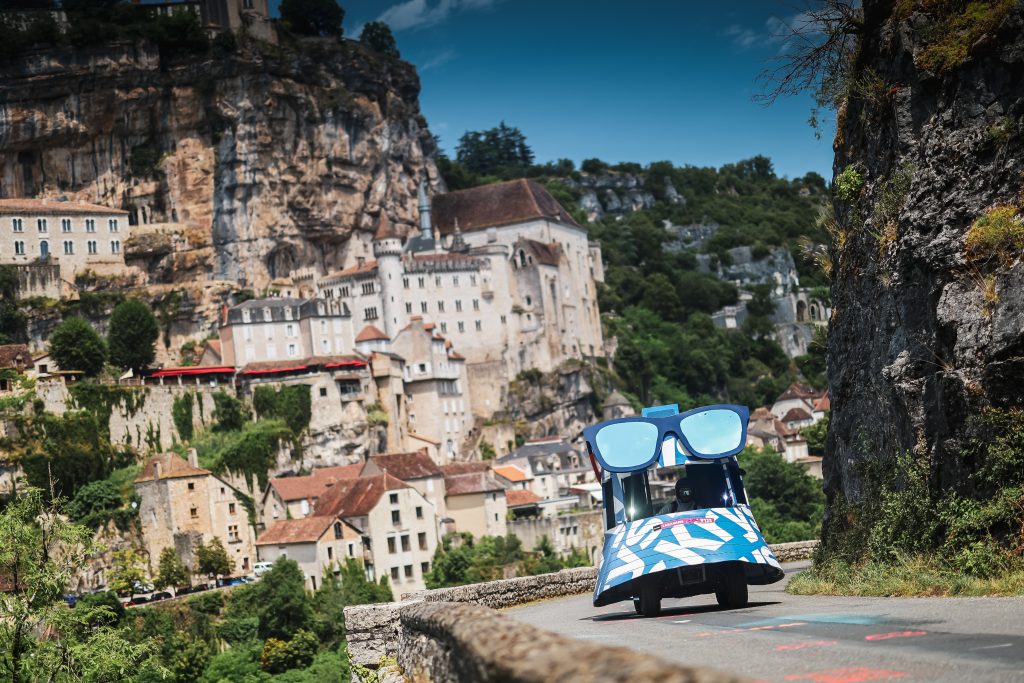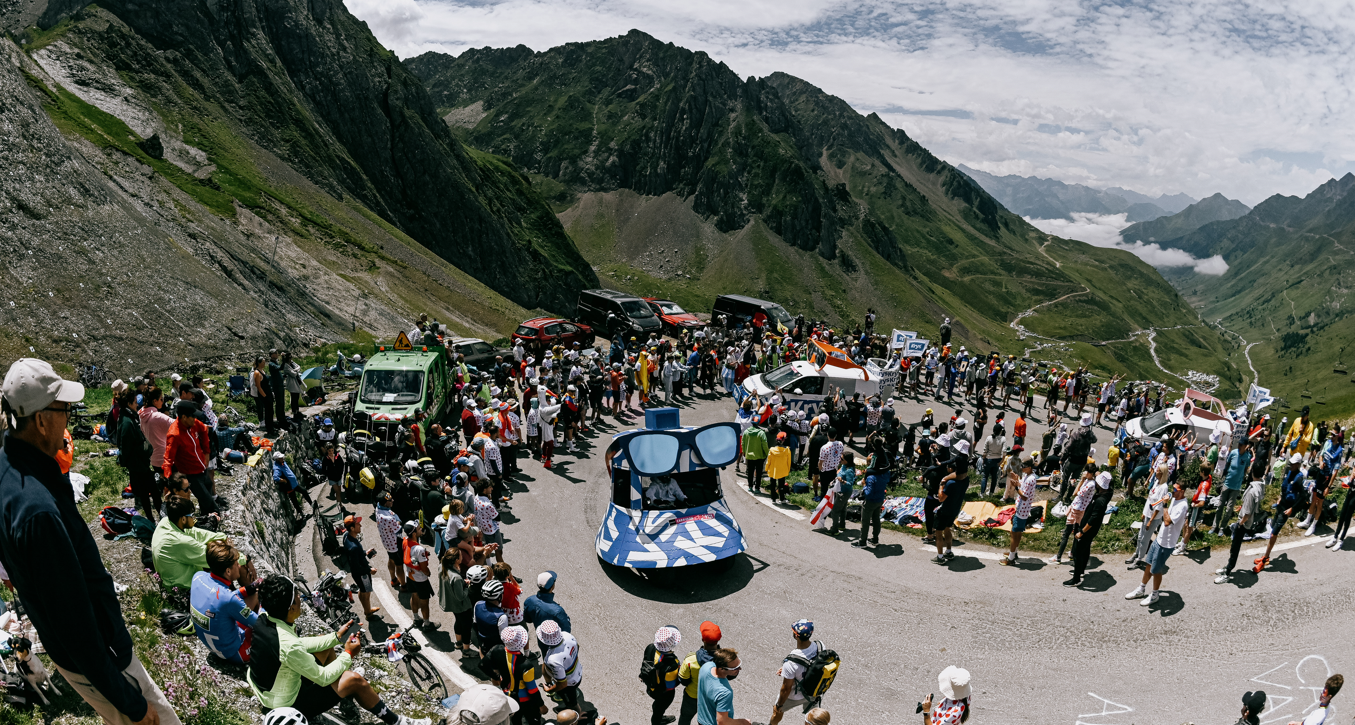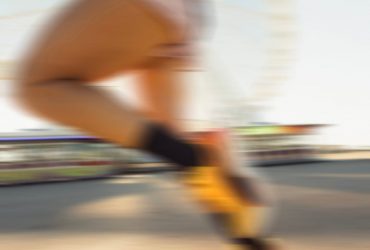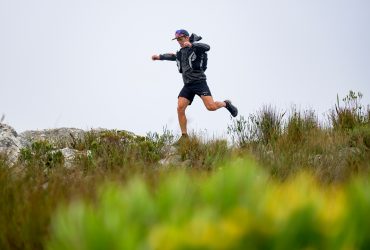On this Saturday, July 20, We Rock Sport spent a day with the Krys teams on the stage between Nice and the Col de la Couillole. Between thousands of bobsleds, tight timing and the beauty of the Alpes-Maritimes passes, dive into the heart of a convoy that attracts 12 million spectators every year.
"Watch out guys, there's a melon and a strawberry coming down the pass full ball". No, we're not dreaming when we hear this sentence uttered on the radio by Thierry, head of the Krys caravan on this Tour de France 2024. As we hurtle down the Col de Braus, the first difficulty of this 20th stage leading the riders from Nice to the Col de la Couillole, it's a giant strawberry and a melon, their structures mounted on quads, that overtake us on the steep bends of this pass linking the towns of l'Escarène and Sospel. Welcome to the Tour de France caravan, where unlikely floats abound among the sponsors of the world's greatest cycling event. At the start in Nice, they are all grouped together under the immense glass roof of the Palais des Expositions. It's just enough space to accommodate the 150 vehicles in this ultra-colorful convoy, where each of the 33 brands competes with each other in creativity to make sure they don't go unnoticed by the millions of spectators who flock along the Tour's routes.
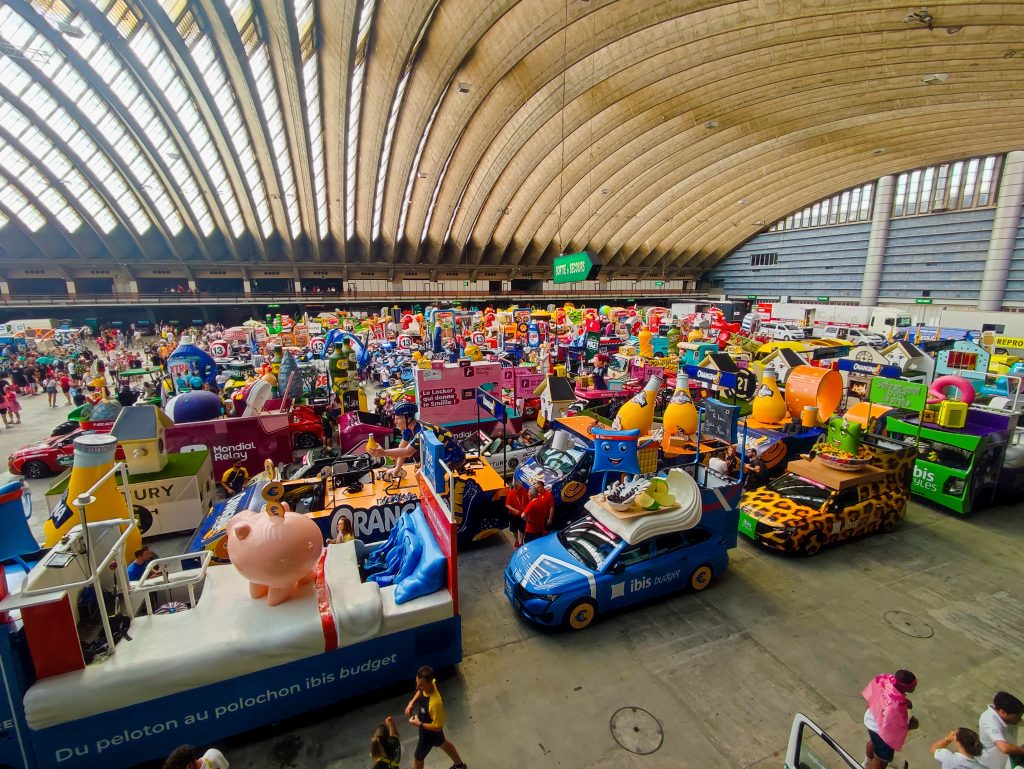
It has to be said that the caravan is a monument to the event, first officially introduced in 1930, two years after the Menier chocolate brand had the idea of distributing the first products to the public during the 1928 Tour. From six vehicles in 1930, the procession is now 10 kilometers long, circulating two hours before the peloton arrives. 570 caravans are mobilized to distribute 10 million gifts over the entire event. In fact, 47% roadside spectators admit that they come to watch the Tour de France primarily for the caravan, not the riders. For its part, Krys is one of the five major partners of the Tour de France (alongside Skoda, E. Leclerc, Continental and LCL), and has 10 years' sponsorship of the Maillot Blanc (as well as a partnership with the Tour de France Femmes until 2026).
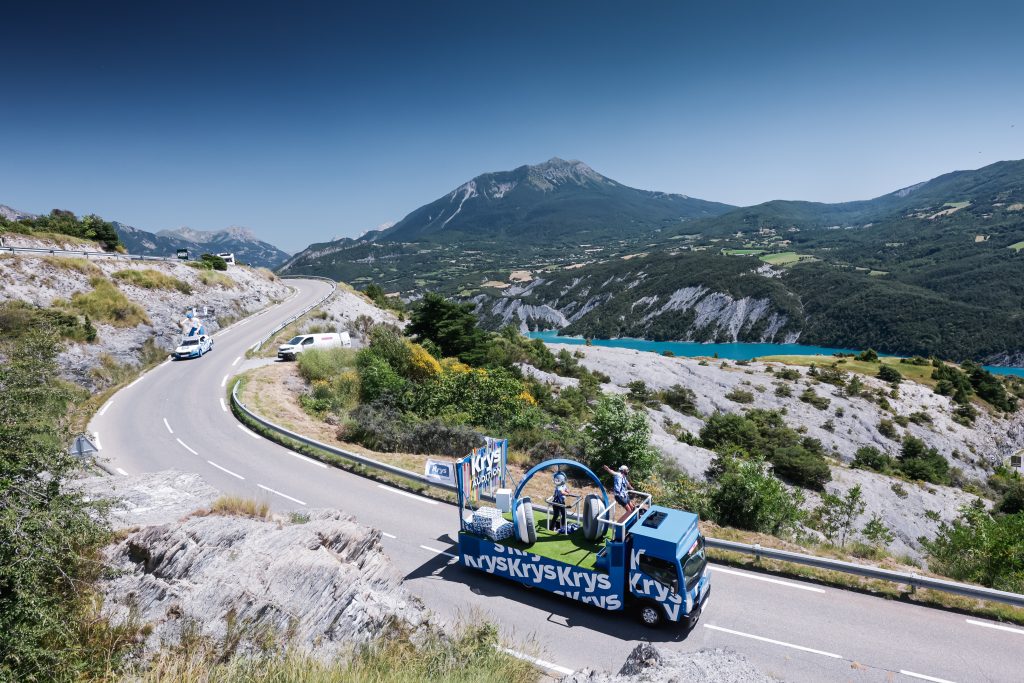
As part of the Tour de France caravanning family, the optician has a special role to play just before the 150 vehicles set off along the route. At the Palais des Expositions, it's past 10 a.m. this Saturday morning, and Hughes, the host who will hold the microphone on his float throughout the stage, explains his special role: "When I arrived on my first Tour de France 14 years ago, I had the idea of taking inspiration from what I was doing at Club Med, namely to set up a little dance to motivate the troops. It lasted a minute, there were three or four steps to know, and it just took off. Everyone was thrilled, and since then it's become a tradition before each stage, with a real choreography that I teach to the other caravaneers. ASO (organizer of the Tour de France) also puts the Krys teams a bit aside when we gather so that everyone can come in front of our float." And indeed, a few minutes later, a crowd quickly forms towards the white and blue vehicles. Hughes motivates the troops over the microphone. The mood rises as the sound system blasts out the latest hits, ending with several battle cries. Everyone leaves with a smile on their face, and some even shed a few tears on this penultimate day of the Tour. "Caravaneers are a big family, and three weeks is more than enough time to forge strong bonds," explains Hughes.
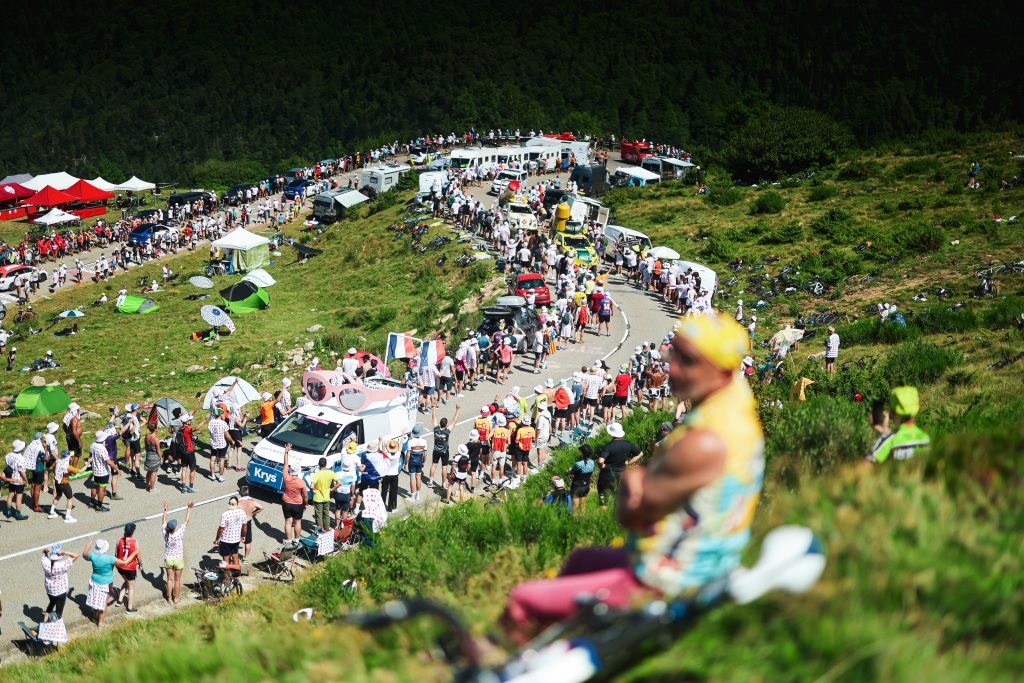
Once this festive moment is over, it doesn't take five minutes for everyone to get back into their cars. "With ASO, the timing has to be respected to the minute," explains Thierry, the Krys caravan chief. "They have this reputation for being very strict about timing, and if your vehicles are late, we won't wait for you and the caravan will leave without you." In a perfectly organized sweep, giant bottles of olive oil, four-metre-long tubs of washing powder and van-sized chickens come out in the same order as at the start of the Tour. In the streets of Nice, the public is already numerous, massed even before the fictitious start line from the Quai Entrecasteaux. The speed of the convoy is impressive, and Hugo, who's driving the van in which we've taken our seats for the day, isn't exactly lagging behind the vehicle in front. Once we've passed the crowded Promenade des Anglais, we head for the actual start line, and the distribution of the 20,000 Krys bobs finally gets underway with the five Krys vehicles.
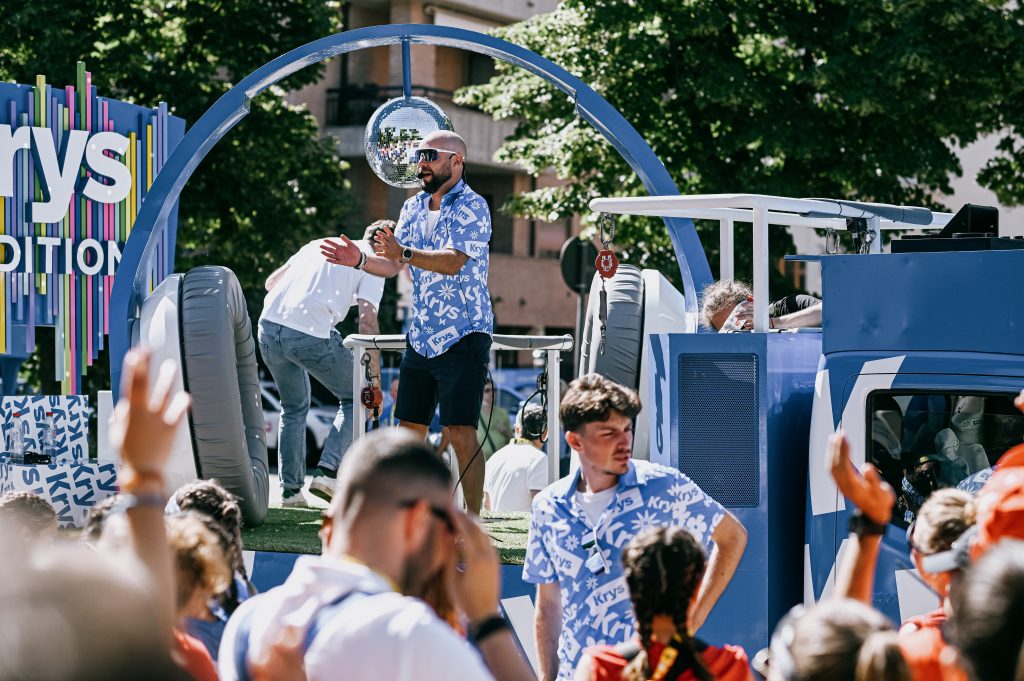
From the gondola at the rear of the vehicle, Lise is in charge of sending the gifts to the public, with the priority - not always easy to achieve at this speed - of not aiming for heads. At the end of the stage, the boxes have to be empty, so the bobs are thrown out by the handful and the public ask for more, rushing to the ground to pick up these precious goodies offered by the Tour de France caravan: "We really have to be vigilant, because the spectators are sometimes only concentrated on the gifts and quickly forget that other vehicles are coming," explains Hugo, who is experiencing his first Tour de France in the caravan. "Bobs can fly and go on the road, which doesn't stop people from going to pick them up." At 21, Hugo is a graphic design student in Lyon and has discovered the world of cycling on this Tour de France, as he is more into soccer. "On the first stage where I drove the van, we had the Galibier and it was crazy with the public. People were banging on the car, even if it was always in a friendly way. It was impressive, with people sliding down the road in front of me, so I really had to be vigilant. But as we're driving slowly, especially over the passes, you have time to react and avoid an accident." Before the Tour, the caravan drivers are given a day's training to familiarize them with the vehicle they will be driving throughout the three-week event.
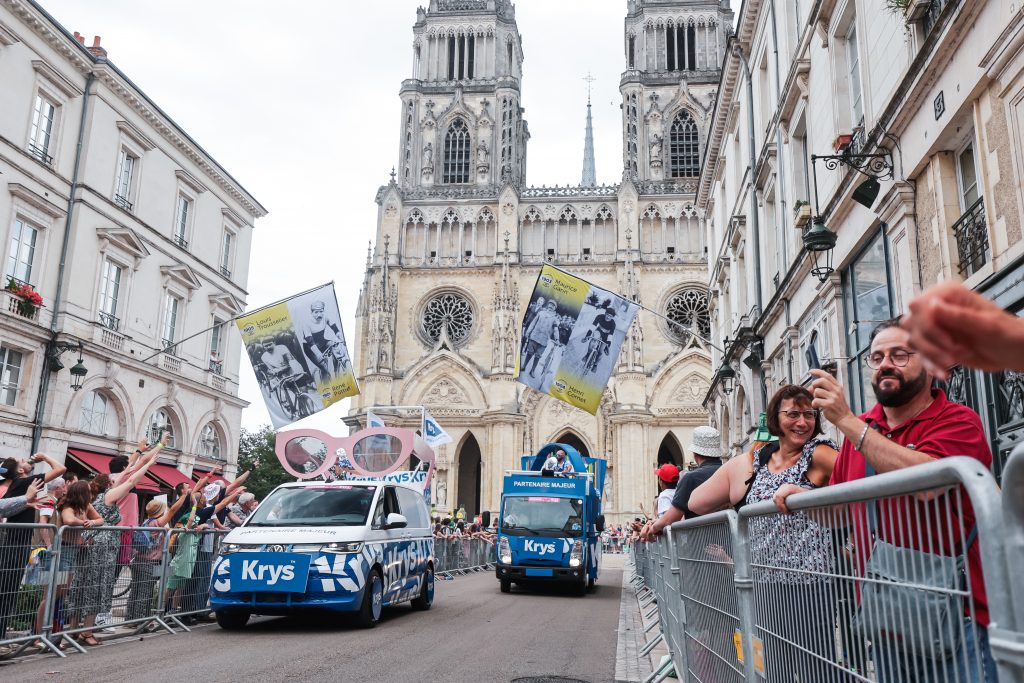
On this penultimate stage to the Col de la Couillole, the Col de Braus and the Col du Turini are also on the programme, and the laces are packed with people. But everyone's smiling, eyes glued to the air as the "hostess distributors" keep the bobsleighs flying on either side of the road. For the caravanners, there's no pause on this stage, as everyone rolls the 133 km in one go. In other words, you have to calculate your timing carefully if you want to go to the toilet just before the caravan departs. As for fatigue, the four or five hours of riding over the Alpes-Maritimes passes takes its toll on the body. "At the end of a stage, you feel the same as after a big day's skiing," explains Hughes, who will only have let go of his microphone during the descents of the cols, which the spectators desert in favor of the climbs. As for the two rest days on the Tour de France, "they allow us to take a breather, even if there are logistics to do on that day", explains Hughes, who also points out that the day before each rest day is devoted to a great party "which also allows us to decompress".
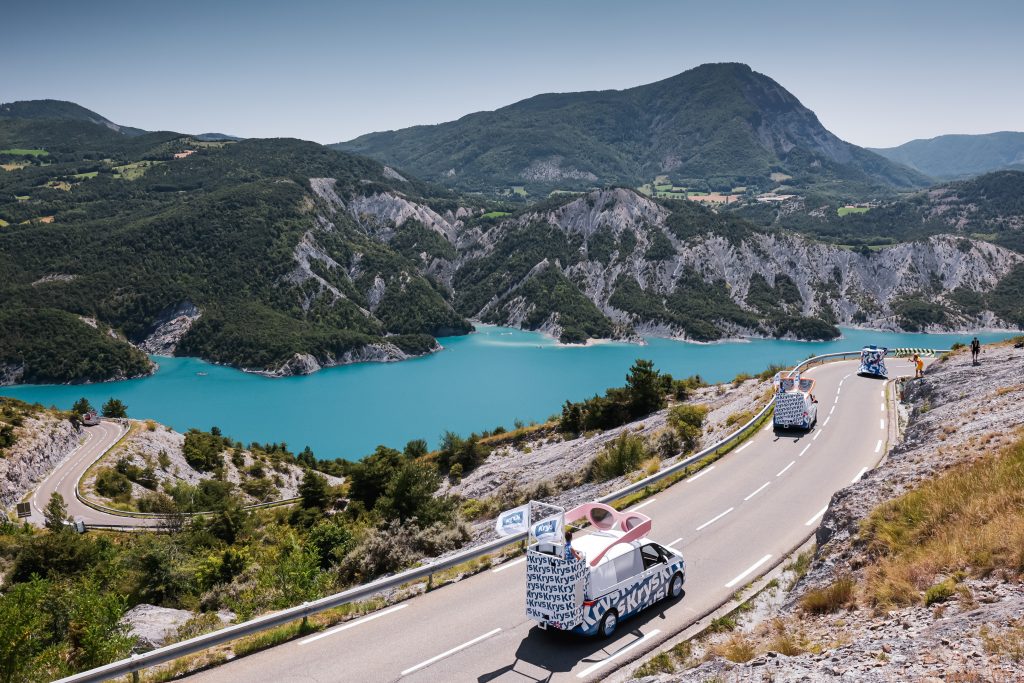
Once over the Col de la Couillole and through the finish arch, the Tour caravan doesn't stop, attacking the descent on the other side and heading straight back to Nice. "We saw the riders arrive three times over the three weeks of the event," explains Hugo. "If you think you're going to see the race by applying as a caravanner, it's not the right plan." On the descent attacked at full speed, the Krys convoy takes a short 10-minute break to (finally) relieve a few cravings and remove the advertising hubcaps from the wheels of the vehicles "which risk getting the better of us if we go over 100 km/h" explains Thierry, the caravan leader. In the trucks, the boxes are empty. A few more bobs will have to be sold during the last stage on Sunday, for a total of 450,000 hats given to the public by the 11 Krys caravanners. And it's a safe bet that all of them will easily find takers. As in 1930 with the Menier chocolate plates...
